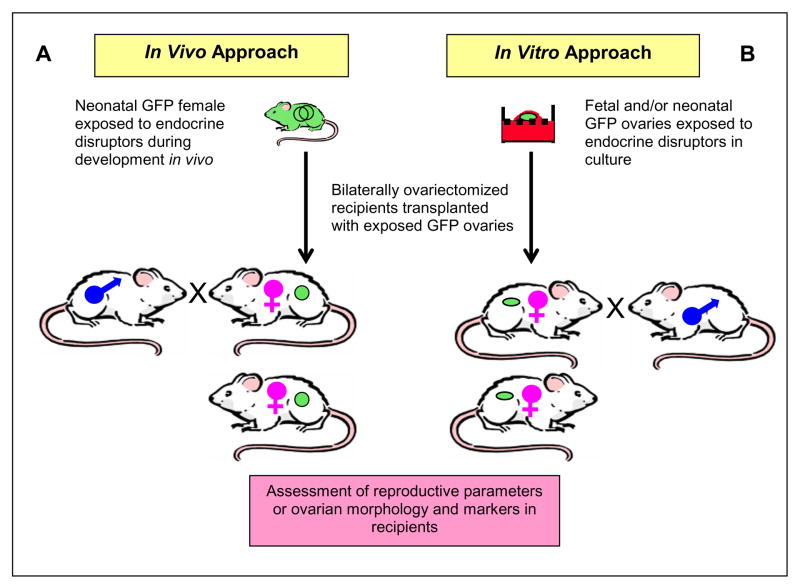Fig. 3.
Proposed use of neonatal GFP ovary transplantation to study direct effects of developmental endocrine disruptor exposure. Wild-type Fischer 344 females are mated with newly developed inbred Fisher 344 GFP males to obtain timed-pregnancies (not shown). (A) Resulting GFP females exposed to endocrine disruptors during fetal and early postnatal stages of ovarian development in vivo are used as ovary donors. (B) Alternatively, fetal or neonatal GFP ovaries exposed to endocrine disruptors in vitro are used as donor ovaries. In vivo or in vitro endocrine disruptor-exposed GFP ovaries are transplanted orthotopically to bilaterally ovariectomized adult females. Following post-surgical recovery, the recipient females are bred with wild-type males and are evaluated for their reproductive parameters. Some recipient females, upon establishment of cyclicity, are sacrificed and the ovaries are collected for assessment of ovarian morphology and molecular markers.

